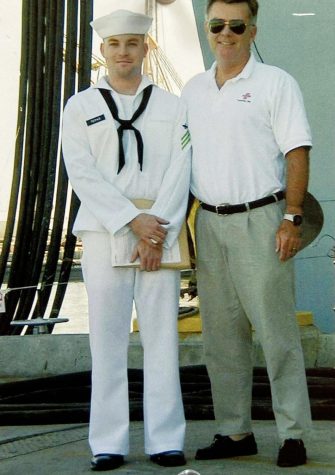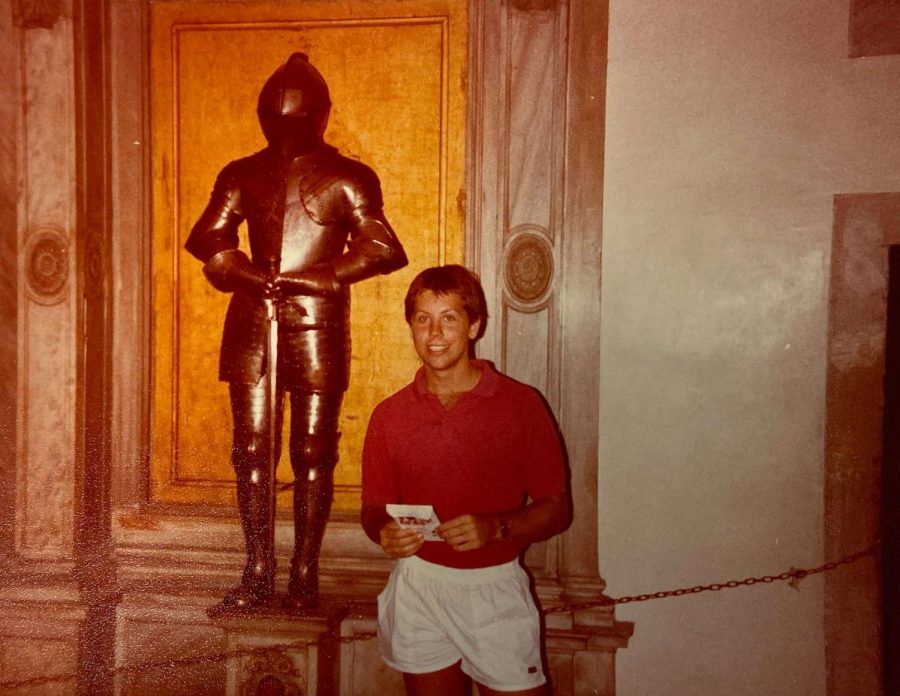Dr. Kostandarithes in The Vatican
The History of the History Nerds
December 13, 2020
“Even though Contemporary World History honors is one of my favorite classes, it’s definitely my most difficult. Probably because there is a lot of reading to do, a lot of analysis, and the tests are really difficult,” Alida Cucoranu (‘23) explained.
Bringing history alive, and sometimes visiting the dead, seems to be what draws both students and teachers to the subject. Cucoranu’s favorite part of contemporary world history honors is the class discussions. “I like the way Mr. O’Riordan teaches the material and plans the discussion to get us all involved in class.”

Mr. O’Riordan’s passion for history started with his dad in the cemeteries of Ireland. His father, in the coal business, had an interest in history, genealogy, and reading. “I remember going around with him visiting graveyards and old relatives,” O’Riordan explained, “and all the books, we had tons of books in the house.”
Contemporary World History Honors is known for its geography quizzes on countries, land features, and cities. The map component of the course began when Mr. O’Riordan and Mr. Tepas realized that their students had no idea where countries were located.
“I think having the context of where places are in the world helps you really understand the history and the current events of the world when you know where they are taking place,” O’Riordan explained.
Many of the history teachers did not plan to go into history or teaching at all. Mr. Tepas was on track to be one of the creatives at the Apple store, and focused more on pursuing history as a hobby through reading books and watching documentaries after finishing his six year term in the Navy. He explained that he first got into American History as a preteen, after watching a documentary by Ken Burns on the Civil War.
“I don’t know what about it in particular,” Tepas expressed, “but I think it was the fact that that was the first time I had been exposed to history in a way that kind of brought it alive.”
Later, Mr. Tepas finished his American history degree at the University of North Florida with an emphasis on southern, antebellum America, but he was not sure what he wanted to do as a career, as he was in between IT and service to the national parks. In 2007, while working as a teacher assistant at the university, Tepas received a call from Bolles to become a long-term substitute and soon after, he received a call about an open history teacher position.
However for Dr. Kostandarithes, his passion for history did not start until later in life, when his dad sat him down on their farm in Georgia and asked, “Have you started thinking about college?”
Junior Sophie Shwartzman loves the interactive lessons and discussions in Dr. Kostandarithes class, just like sophomore Cucoranu. “His teachings are less lecture based because students are more actively participating in his class, which allows us to have more conservations about the topics,” Shwartzman explained.
Still, at college Kostandarithes was not sure what he wanted to study. “I think I was a bio major originally, because I had a very good biology teacher in highschool,” he recalled. Then Kostandarithes went on to get his degree in renaissance history after being inspired by an amazing renaissance professor, before going to Tulane to get his doctorate. At Tulane, he changed his degree to American History after the renaissance profesor went on sabbatical, and the rest is history.

